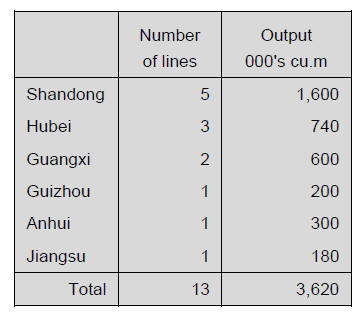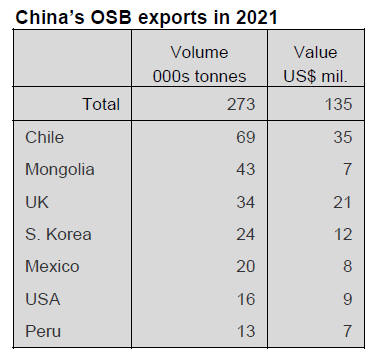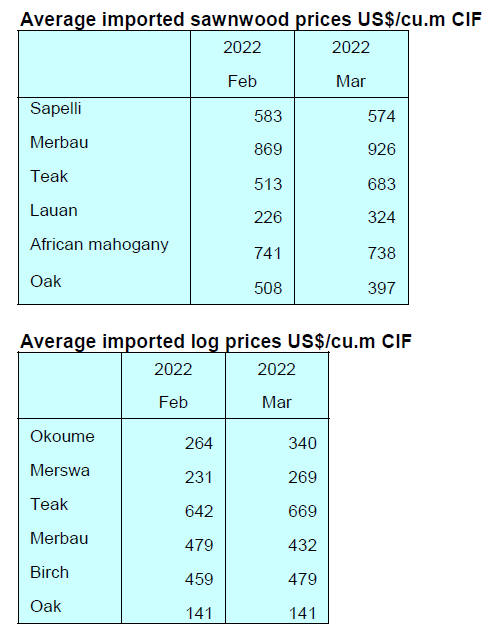US Dollar Exchange Rates of
10th
May
2022
China Yuan 6.7217
Report from China
Financial measures to support enterprises
The State Council decided measures are needed to support
micro, small and medium enterprises whose finances have
been disrupted by measures introduced to slow the spread
of covid-19.
The State Council called for immediate implementation of
the measures which include tax rebates, tax reductions and
fee reductions, delayed the payment of social insurance
premiums, help with logistics services all aimed at
encouraging enterprises to resume work and production.
Tax rebates and tax reduction are key measures to stabilise
the macroeconomic. It is estimated that RMB2.5 trillion of
tax reductions will be completed for the current financial
year. More than 20 tax support policies will be
implemented this year.
It is reported that financial and tax departments at all
levels are closely cooperating to speed up the progress of
tax refunds. As of 28 April 2022, a total of RMB625.6
billion had been refunded. According to the Ministry of
Finance it will advance the refund of tax credits for small
and medium-sized enterprises in May and will speed up
refunds for larger enterprises.
Large state-owned banks will increase small and micro
loans up to RMB1.6 trillion this year and the Ministry of
Finance is encouraging banks to strengthen proactive
services. For small, medium and micro enterprises and
individual industrial and commercial households loan
renewal and extension or adjustment of repayment
arrangements will be adopted. The State Council adopted
measures to "remove burdens" and "add vitality" to
enterprises.
See:
http://www.cinic.org.cn/xw/zcdt/1285307.html
Slight decline in timber prices
It has been recently reported that timber prices have been
unstable and have been trending down by around RMB20
per cubic metre for radiata pine, hemlock, spruce and fir,
scots pine from Jiangsu Province; radiata pine and scotch
pine from Shandong Province; radiata pine in Hebei
Province and Tianjin Municipality; radiata pine, spruce
and fir, hemlock in Fujian Province.
Timber prices are closely related to activity in the
housing
sector. According to the National Bureau of Statistics
housing construction started on 298.38 million square
metres in the January-March period, down 17.5% year on
year.
The utilisation rates of downstream projects have been
relatively low as demand for all types of building materials
is still weak and sales of construction timbers are flat.
As the epidemic is brought under control production will
be resumed and market demand is expected to recover
driven by government initiatives but timber prices are
likely to fluctuate for some time to come.
Increase in OSB output
China's oriented strand board (OSB) sector has grown fast
as production by overseas mills has slowed and
international demand has expanded. China¡¯s OSB output
in 2021 surged 70% to 3.4 million cubic metres, a record
high. Of the total, output of faced OSB was 850, 000 cubic
metres.
The capacity of China¡¯s OSB output in 2021 was 4.42
million cubic metres annually. An additional 13
continuous flat press production lines with a capacity of
3.62 million cubic metres per year have been brought on
stream.

In addition to the continuous flat press production
line
China also has some single-layer and multi-layer press
production lines to produce OSB. Most of these have a
production capacity of 10,000 to 50,000 cubic metres
annually with a maximum production capacity of 100,000
cubic metres per year and these mills are mainly in
Shandong, Jiangsu, He¡¯nan and Yun¡¯nan Provinces. 13
OSB continuous flat-pressing production lines are under
construction in 2022.
These OSB production lines will be completed and put
into operation during 2022-2024 period, and the national
production capacity of OSB will exceed 8.5 million cubic
metres annually.
OSB imports
According to China Customs OSB imports in 2021
totalled 182, 000 tonnes valued at US$86 million, down
9% in volume but up 14% in value year on year. The CIF
price for China¡¯s OSB imports in 2021 was US$475 per
tonne, up 26% year on year. China¡¯s OSB imports in 2021
were from Russia, (35%), Canada (19%), Germany (13%),
Brazil (12%), Thailand (9%) and Romania (7%).
Chinese analysts suggest the OSB market in China is in a
period of development as OSB is rapidly replacing other
wood panels. There are many OSB manufacturers in China
but most of them are small scale and inefficient such that
imported panels are deemed superior.
With the growth of the domestic OSB market imports will
rise but domestic investment in new production capacity
will also grow. The output of China¡¯s OSB increased year
on year by 31% in 2019, 43% in 2020 and 70% in 2021.
China¡¯s OSB exports in 2021 totalled 273,000 tonnes
valued at US$135 million, surging 224% in volume and
323% in value. The CIF price for China¡¯s OSB imports in
2021 was US$494 per tonne, up 30% year on year.
80% of China¡¯s OSB exports in 2021 were exported to
Chile (25%), Mongolia (16%), UK (12%), South Korea
(9%), Mexico (7%), USA(6%) and Peru (5%).

GGSC-CN Index Report (April 2022)
In April 2022 because of the spread of COVID-19 in many
places and the impact of the invasion of Ukraine the
logistics and employment potential of the manufacturing
sector have been seriously affected. Raw material prices
continue to rise and the output of the middle and upstream
industries has dropped significantly.
In April China's PMI index registered 47.4, a drop
of 2.1 points from the previous month marking the lowest
level since March 2020. Against this background
the timber manufacturing industries have been impacted,
order levels have fallen and difficult logistic operations
along with increased transport and freight charges are
damaging.
The GGSC-CN comprehensive index for April registered
40.0 (71.1 for last April and 60.4 for April 2020) a
decline of 4.6 points from the previous month and has
been below the critical value of 50 for two months. This
indicates that the operation of the forest products
enterprises represented in GGSC-CN index shrank from
last month. See Figure below.

Challenges
COVID-19 has repeatedly appeared, trans-province
transportation is disrupted and transportation costs are
high.
Freight rates have increased significantly.
Products in short supply
None.
Commodity for which prices have increased
Methanol, melamine, paraffin, waterproof agent and other
chemical raw materials.
Commodity for which prices have dropped
Miscellaneous firewood, eucalyptus firewood, pine
firewood, core board, eucalyptus logs, melamine, urea.
In the April 2022 GGSC-CN index three sub-indexes were
flat two declined. The production index registered 41.7, a
decrease of 8.3 points from the previous month. The new
order index registered 25.0, a decrease of 8.3 points from
the previous month reflecting the ability of enterprises to
obtain orders is worse than in March.
The new export order index reflecting international trade
registered 25.0 same as the previous month and has been
below the critical value of 50 for seven months indicating
that the flow of orders from overseas remains weak.
The main raw material inventory index registered 58.3
the same as the previous month. The employment index
registered 50.0 the same as the previous month. The
supplier delivery time index was 41.7 the same as the
previous month.
See:
http://www.itto-ggsc.org/site/article_detail/id/238

|